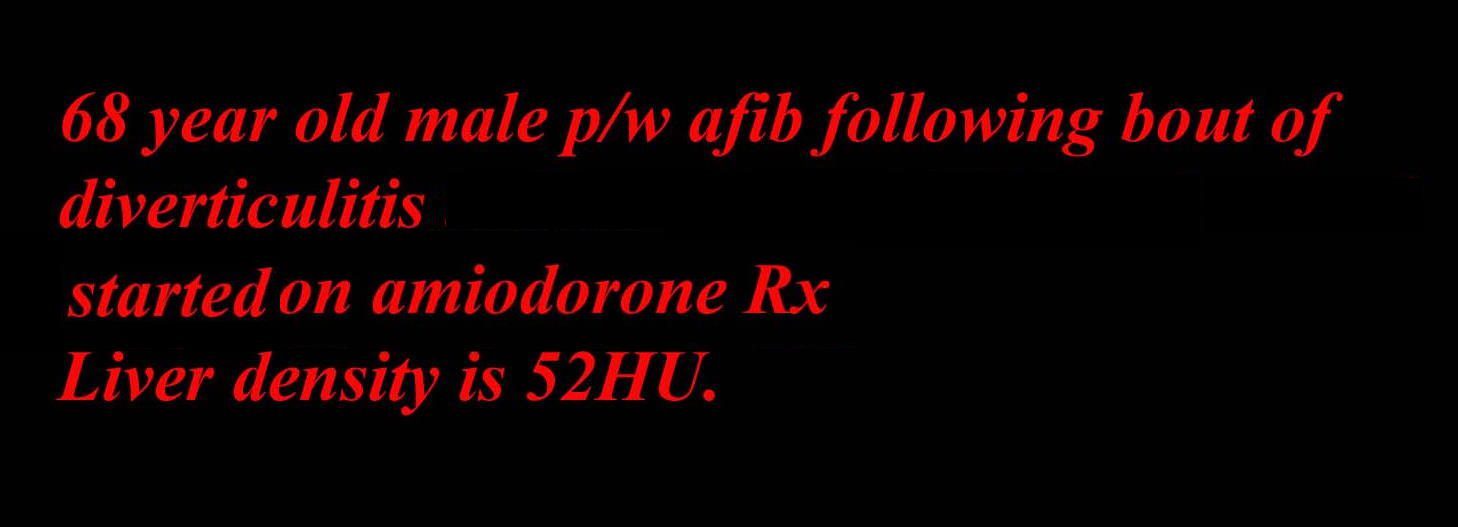
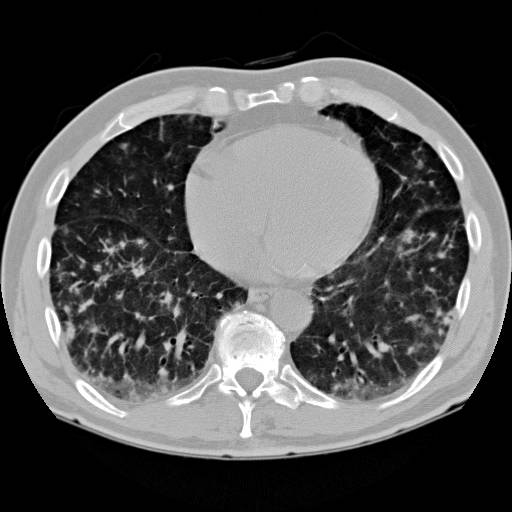
68-year-old male presented with atrial fibrillation during an acute episode of diverticulitis. He was started on amiodarone with good response. He presents 9 months later with dyspnea. Ct scan in the axial plane through the lung bases show reticular changes characterised by irregular thickening of the interlobular septa, mild heterogeneous ground glass changes mosaic attenuation centrilobular nodules and bronchiolectasis suggesting a combination of small airway disease and an alveolitis with early fibrotic change.
These findings are consistent with amiodarone toxicity.
Ashley Davidoff MD TheCommonVein.277Lu 37873
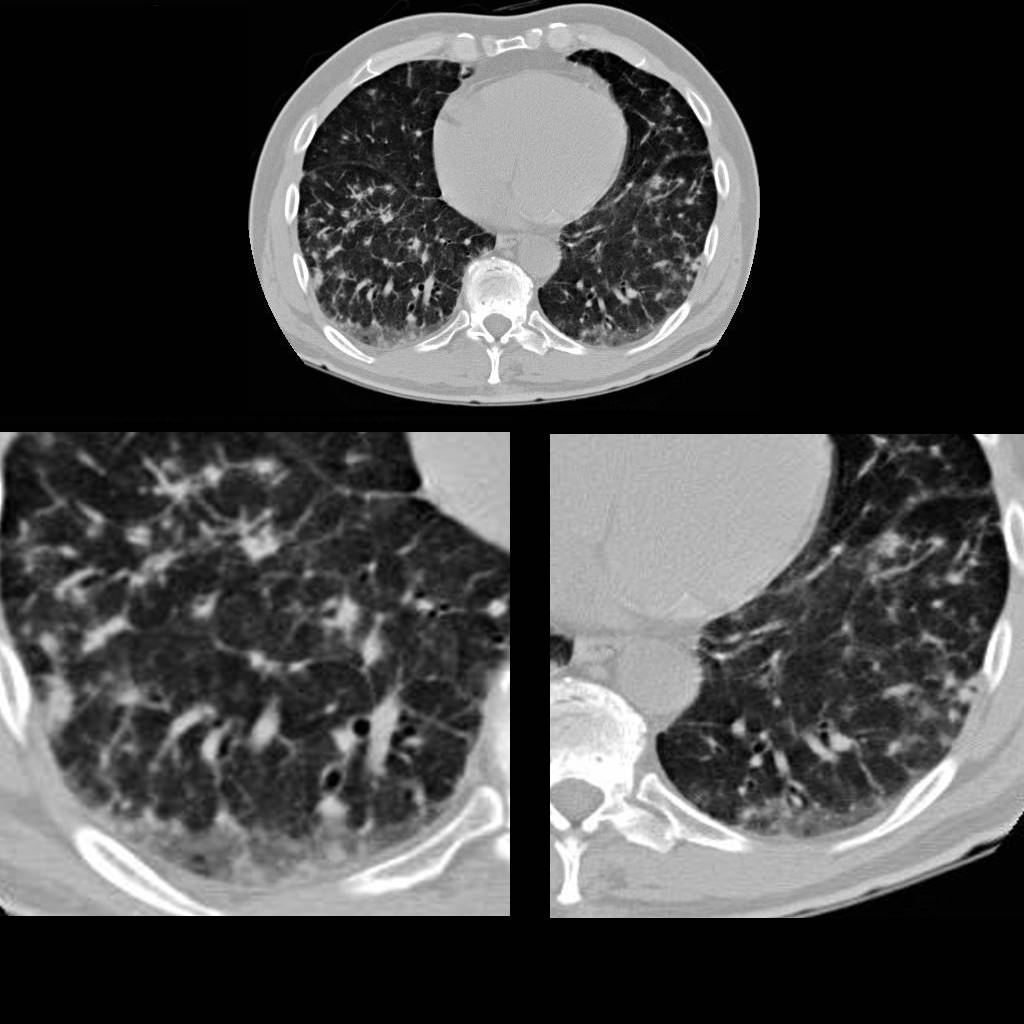
68-year-old male presented with atrial fibrillation during an acute episode of diverticulitis. He was started on amiodarone with good response. He presents 9 months later with dyspnea. CT scan in the axial plane through the lung bases show reticular changes characterised by irregular thickening of the interlobular septa, mild heterogeneous ground glass changes mosaic attenuation centrilobular nodules and bronchiolectasis suggesting a combination of small airway disease and an alveolitis with early fibrotic changes . These findings are consistent with amiodarone toxicity
Ashley Davidoff MD TheCommonVein.277Lu 37873c
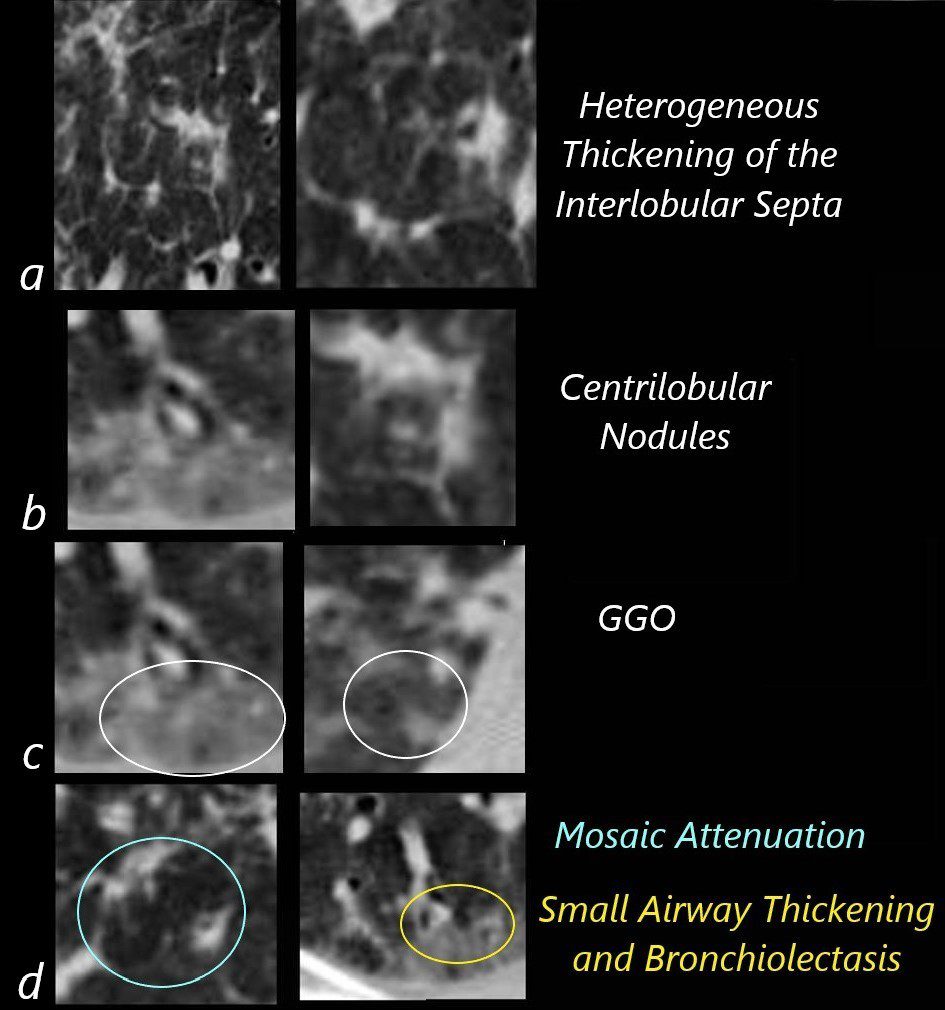
68-year-old male presented with atrial fibrillation during an acute episode of diverticulitis. He was started on amiodarone with good response. He presents 9 months later with dyspnea. CTscan in the axial plane through the lung bases show reticular changes characterised by irregular thickening of the interlobular septa (a), centrilobular nodules, (b)mild heterogeneous ground glass changes (c) mosaic attenuation (d, teal ring) and small airway wall thickening and bronchiolectasis (d yellow ring) suggesting a combination of small airway disease and an alveolitis with early fibrotic changes. These findings are consistent with amiodarone toxicity.
Ashley Davidoff MD TheCommonVein.277Lu 37873c02
At presentation 1 Month Later following Rx
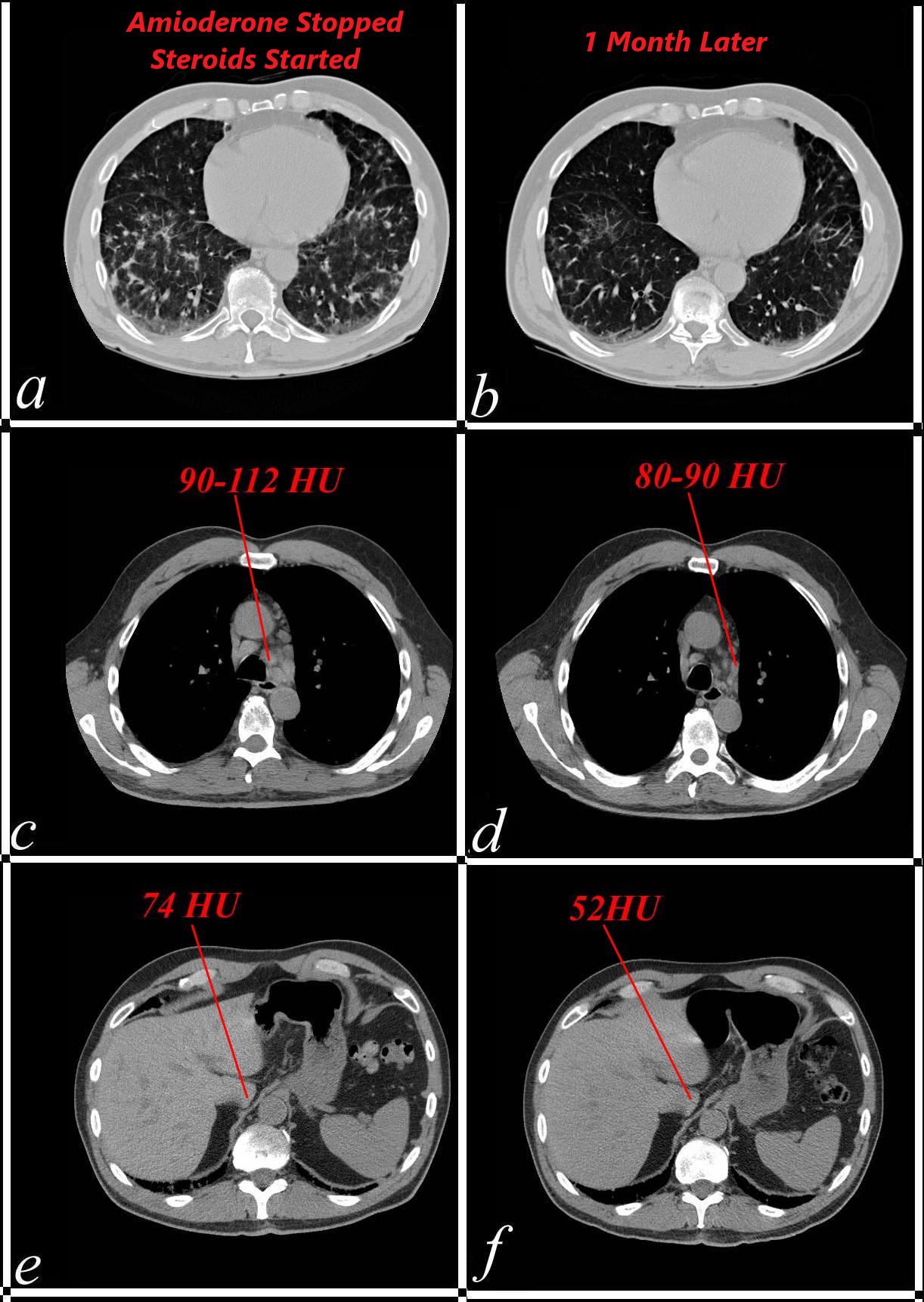
68-year-old male presented with atrial fibrillation during an acute episode of diverticulitis. He was started on amiodarone with good response. He presented 9 months later with dyspnea. At that time he had a prominent interstitial process at his lung bases consistent with amiodarone toxicity (a) with increased density in enlarged mediastinal nodes (c) and liver (e). The amiodarone was discontinued and steroids initiated. CTscan 1 month following treatment shows improvement in the bibasilar interstitial process (b) decreased size and density of the lymph nodes, (d) and normalization of the liver density (f). These findings confirm the diagnosis of amiodarone toxicity
Ashley Davidoff MD TheCommonVein.277Lu 37922c05
2nd Case
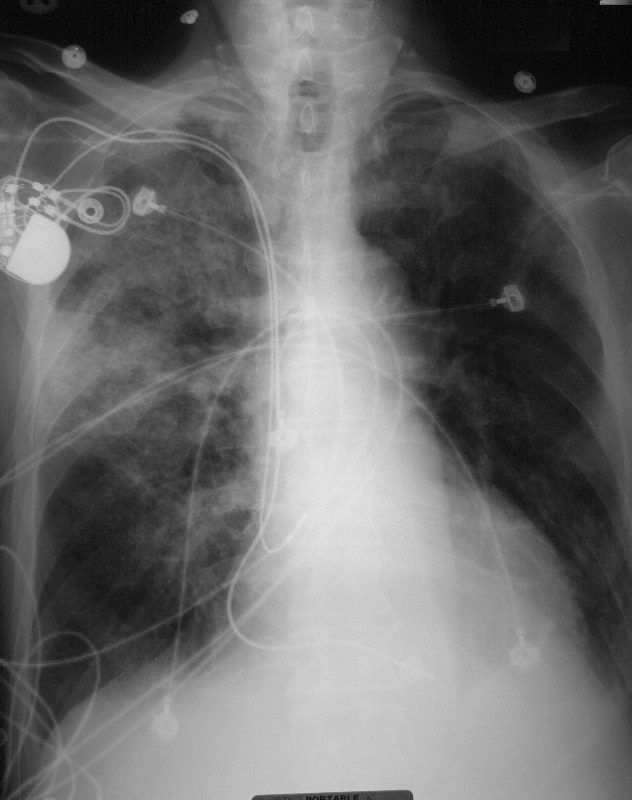
Ashley Davidoff MD
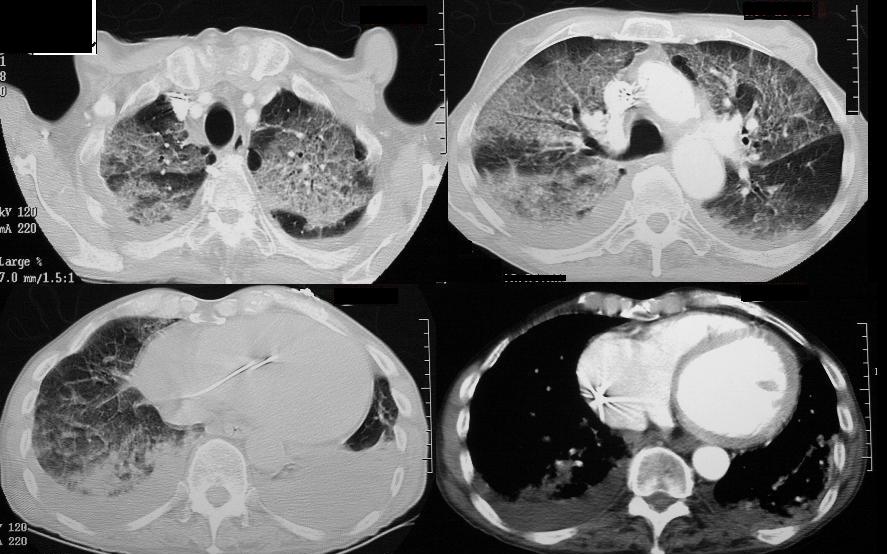
Ashley Davidoff MD
6 Weeks Later

CXR 6 weeks later shows persistent but significantly improved amiodarone
Ashley Davidoff MD
Ashley Davidoff MD
